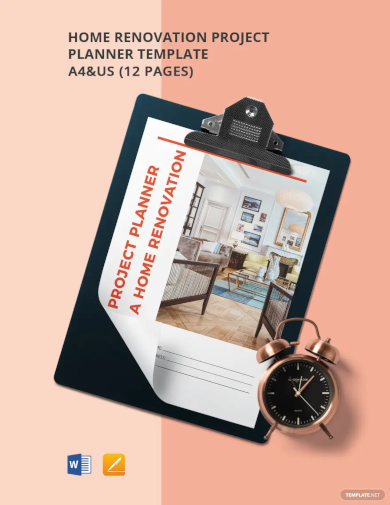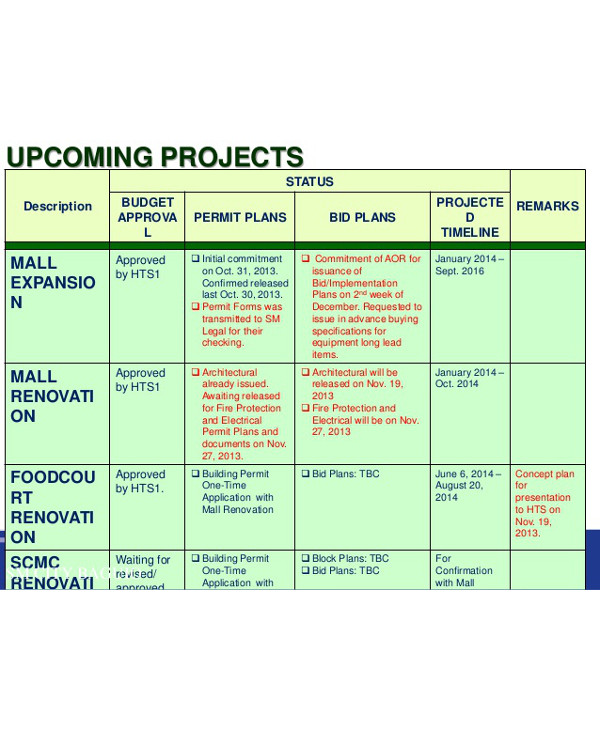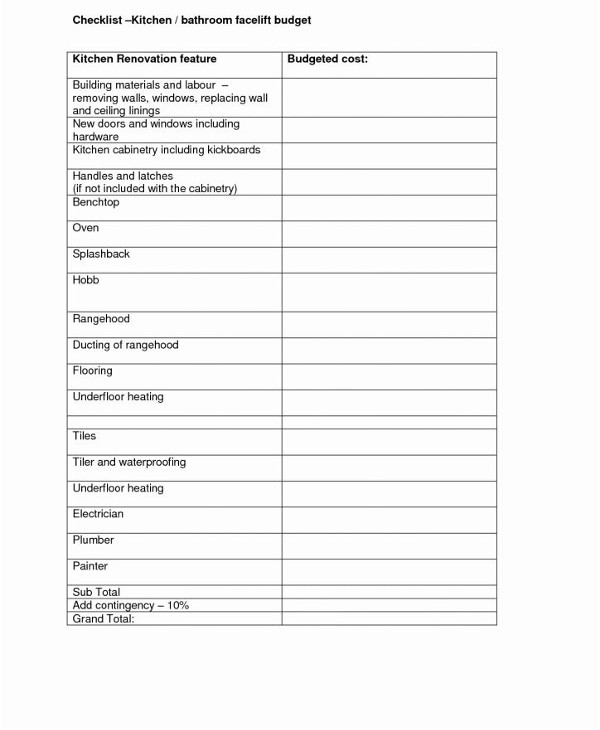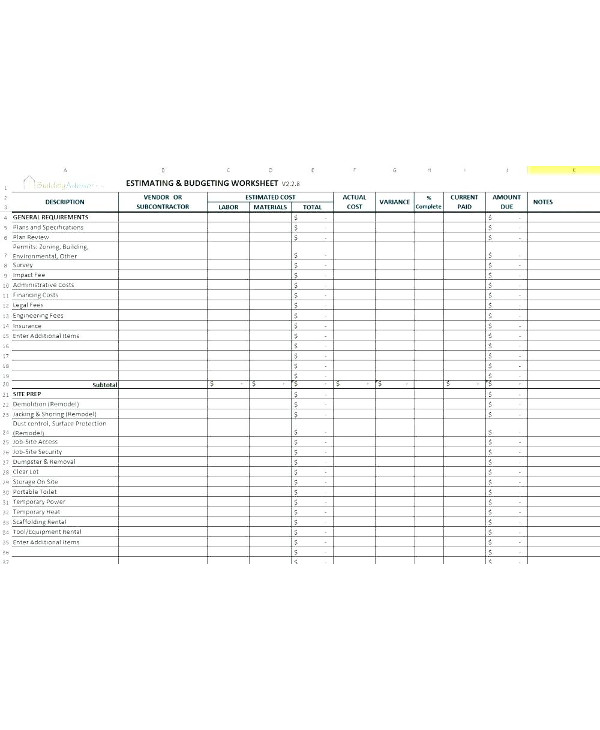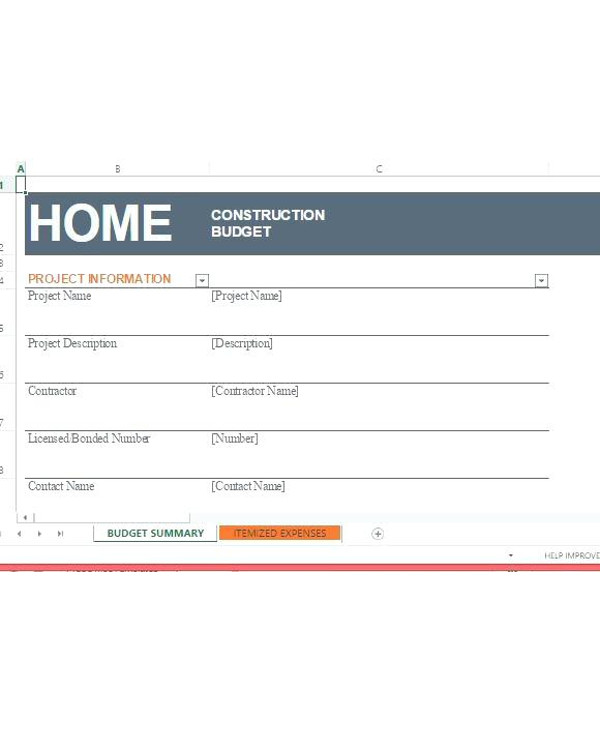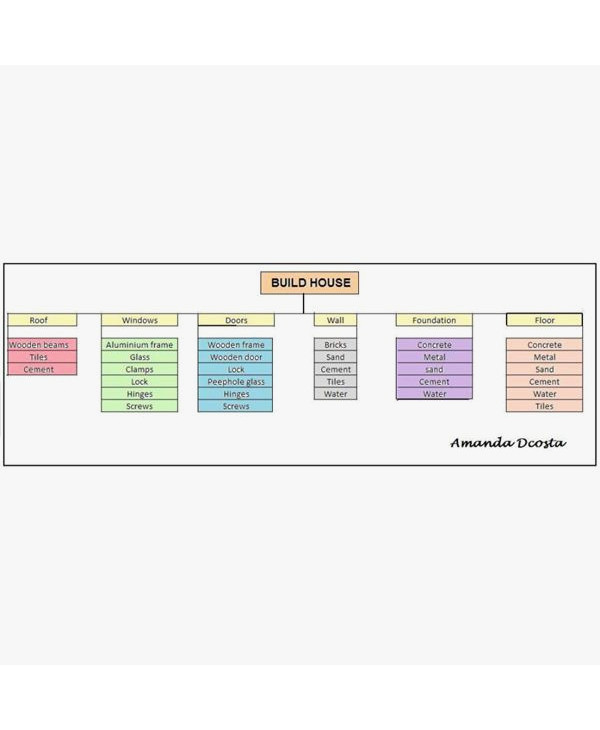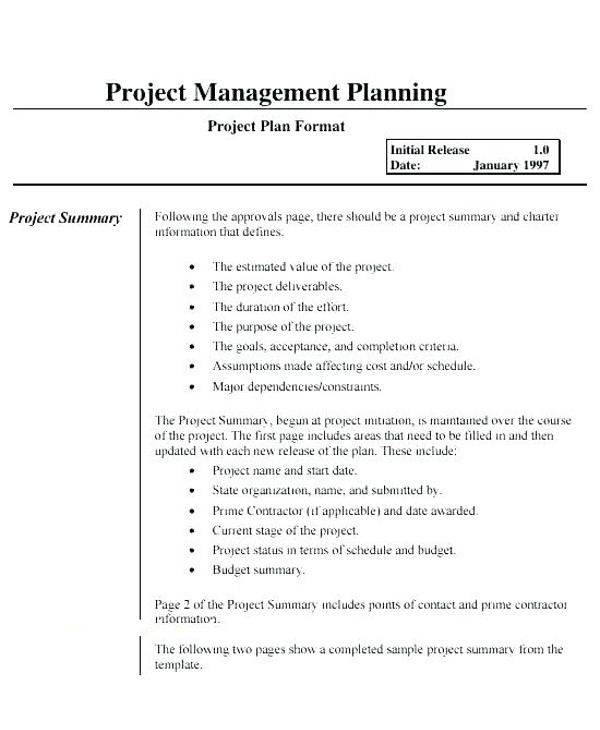10+ Home Renovation Project Plan Examples to Download
Doing your own remodeling is, to say it lightly, a big job. There are many things you need to get done, details that need to be finalized, and materials that need to be acquired. The whole process is already a confusing mass of loose ends, and jumping straight into it without first deciding on what to do will only make the task more difficult.You may also check out advertising plan examples.
One of the biggest remodeling mistake homeowners make is skipping the planning phase and rushing straight into the project. Before starting any home remodeling project, you need a plan. While it’s a tedious process, it will help you make the most out of your time and money.You may also like job plan examples.
Home Renovation Project Planner Template
Project Plan for Home Renovation Table Example
Home Remodeling Project Plan for Kitchen and Bathroom
Kitchen Remodeling Project Costs Worksheet
Four Steps to a Foolproof Home Renovation Project Plan
Below are four easy steps that will help you ensure that your remodel meets and exceeds even your highest expectations, while successfully avoiding making all those often inescapable annoying little mistakes along the way.
1. Decide on what you want.
A big part of planning a home project is deciding what look you will try to achieve for your home. Having a clear mental picture of the end product that all the hard work should result in is a great way to make sure that, from the first day to the last, all of the smallest decisions you will make will move you closer to your desired result.You may also like simple business plan examples.
Whether you’re simply converting a bathtub into a walk-in shower or building an in-law suite, having a better understanding of how you want your house to look and feel after all the remodeling will help you decide on budget, design, and materials more easily.
2. Create a realistic budget.
The next step in your home remodeling project is to create a budget. Redesigning a house can be expensive. Deciding on a budget will help you make sure that you don’t spend more than you should, and that you achieve everything you want to get done with enough to spare. You may also see daily plan examples.
Once you’ve decided on the scope of your project and what features and finishes you want, figure out how much money you have available to spend on your remodeling. A little spoiler though, often what you want and how much you can afford aren’t always the same things.
The best thing you can do is to be smart with your spending. After all, there is nothing that a frugal pocket can’t do. Keep in mind that renovations don’t always guarantee returns and that spending more on an upscale renovation isn’t necessarily a better investment than spending less on a mid-range project.You may also see transition plan examples.
How to Budget for a Home Remodel
You don’t have to cut a big hole from your savings just to make your house prettier. There are several money-saving tips you can follow to make sure you get a lot without having to spend too much.
1. Figure out how much you have to spend. After you’ve decided on what you want, determine whether or not you have enough money to cover the costs to achieve it. Look at your wish list and prioritize needs versus wants. For example, instead of setting aside a budget for garden gnomes, why not spend that money fixing the fence instead? It will make your lawn prettier, the same way that lawn gnomes will, while also ensuring that your house is safely boxed in from unwanted strangers.You may also like simple business plan examples
2. Assess the present condition of your home. As a general rule, the older the home, the more hidden costs you’re likely to find behind your doors and walls. You don’t want to focus on renovating your home office while your attic’s floors are nearly collapsing. Make sure that you don’t have more pressing structural issues to focus on.You may also see territory sales plan examples.
3. Check what permits your city requires. Unfortunately, we are not allowed to randomly break walls for beautification purposes. Which is why, in addition to protecting your home and family, getting the necessary permits will ensure that you won’t have to redo any of the work. The last thing you want is to run out of money in the middle of the project.You may also see weekly plan examples.
To avoid spending more than what your budget allows you to, try adding up a close estimation of all of your expenses before you start. This can help you get a rough guess on how much the remodeling will cost you. Add a little few extra dollars in there for miscellaneous expenses and you’re good to go.You may also see legal strategic plan.
Free Home Renovation Project Plan Template
Example Project Plan for Building a House
Home Construction Budget Project Plan
C. Get written estimates.
Planning a home remodeling project involves getting estimates from remodeling companies or general contractors unless you’re doing all this on your own. Chances are you’re not, so before you start researching for available, not to mention affordable, contractors, get recommendations from family and friends about who they hired for their own remodeling project.
You can never go wrong with tried and tested workers. Start compiling a list of several contractors you may want to hire, but don’t let the price be the deciding factor. We are often attracted to the cheapest. It’s one of man’s greatest weakness. However, the cheapest often won’t give you a result you can be happy with.
So instead of focusing on that sole factor, try considering these several others before hiring a contractor:
1. Years of experience.
Honestly, if you are looking for an inexperienced newbie, why don’t you just go ahead and do the job yourself? But you won’t because remodeling your home is important to you, and you want to entrust the job to someone who’s actually capable of doing it. A contractor who has been doing business for a long time makes them a safer bet than one who is fairly new to the business.You may also see project plan examples.
2. A contracting license.
Make sure that your contractor has gone through all of the steps needed to obtain any required certifications specific to their line of work. Why? Would you trust an unlicensed, although just as qualified, doctor to conduct a sensitive operation on you when the medical field is brimming with licensed and qualified doctors? Although a contractor and a doctor are two very different things, the point remains: we only want someone who has been given the right to perform the job. You may also see catering company business plan.
3. Certificate of insurance.
Contractors should have workers’ compensation and liability insurance for the type of work they perform. Yes, you’re just redesigning your house. But these people deal with machines and equipment, and insurance is not an option. It should be a necessity.
4. Timeline for completion.
It’s important to know when the contractors will start and complete a project, and if there are any circumstances that may affect that schedule. Yes, you want your house to look prettier, but you can’t have strangers banging around your walls and making loud noises with their machines for too long. You need to know exactly when you can enjoy the results of your money and effort.You may also see marketing plan examples.
5. Payment schedule.
If knowing when you’ll enjoy your home’s new look will give you some peace of mind, knowing when they will get paid will do the same to your contractors. But, of course, a reputable contractor won’t ask you to pay the full price upfront, and the entire business world advises everyone not to. However, it’s important to discuss payment terms before construction begins. In some cases, it’s even better to spend a little extra to get someone you’re comfortable working with.
D. Map out your schedule.
Depending on the scope of your project, a home renovation can run anywhere from a few days to a few weeks. As a result, you can expect your day-to-day life to be impacted in some capacity. If you’re remodeling your kitchen, don’t expect your breakfast to be peaceful for a while.
If you’re getting your living room done, move your guests somewhere else. Renovating the master bedroom? You’ll have to make temporary sleeping arrangements. Whether or not you should live in your home during construction depends on what work is being done.You may also see social media marketing plan examples.
If the contractor you hire doesn’t provide their own timeline or project plan for your home renovation, you should make your own and share it with them. It’s best that both parties are in agreement regarding this aspect. Generally, the bigger the project, the longer it will take.You may also see food catering business plan examples.
Example Project Management Plan for House
Project Management Planning for Home Remodeling
Renovation 101: Helpful Reminders
Now that we are through discussing the basics of a renovation project, let’s delve deeper into the different factors that you also need to consider before pushing through. Do you need to tap an architect and an interior designer, or your wild mind enough? Do you need a permit before you begin, or are you conducting minor conditions that nobody needs to concern themselves with?
Know the answers to these questions and a couple more helpful tips below.
Always take your budget into consideration. Major renovations are more complicated and may cost more. If you are working with a limited budget, make sure that you use that money to alter a more significant portion of the house.
It’s important to decide which space or spaces need to be prioritized. This will help you stay within your practical working budget. Instead of doing the kitchen and the living room at the same time, choose which one among them must be remodeled first, and go back to the other one next time you become less short on cash.You may also see self-catering business plan examples.
What can I do with my old furniture? This one is a really good question and one that is frequently asked by those who have remodeled their houses. Of course, the renovations would also include purchasing a new set of furniture to go with the new design you are trying to achieve. So what will you do with the old ones?
Once you’ve identified the areas for renovation, inspect the spaces and check pieces that can be reused or repurposed. Reusing the materials will help you keep the cost low. Instead of buying a new table for your office, why not keep that gorgeous old mahogany table for after the remodeling?
Or that sturdy plywood from an old built-in cabinet can be used to make a new center table if it’s still in good condition. If you have pieces of broken ceramic tiles chipped off from the floor, you may use it on kitchen splashboards in place of expensive mosaic tiles by laying it out in a random pattern.You may also see e-commerce project plan examples.
By using your imagination, unleashing your creativity, and focusing on what will help you save money the most, you won’t need to throw away old furniture.
Do I need to enlist the services of an architect or an interior designer?
Commissioning the services of an architect or an interior designer will immensely help you maximize a limited renovation budget as design mistakes and unconfident quality estimates will be kept at a minimum, and specifications will be cost-sensitive. However, you don’t need to enlist the services of any of these professionals if you think you can do a perfectly good job yourself. You may also see hotel marketing plan tips.
Can I work on a renovation project without professional help?
Yes, of course you can. But it is undeniable that you can benefit from having a sketch or a guide of a general layout of the desired final outcome of the renovation. Having a plan will help you define the renovation direction and avoid unexpected changes mid-construction that may have serious cost implications.
Other valuable tips to keep in mind:
1. Diligent supervision during construction is important, especially when trying to keep within a budget without professional design assistance. Yes, your contractors are professionals who will do their best in doing their tasks, but with you there, they’ll try to make an even better one. This will also ensure that all materials are used correctly and that the workers are working to achieve the needed output.You may also see restaurant event proposal examples.
2. Renovations can be complex and costly, but if you’re armed with proper planning and practical prioritization, you can go through the fun and exciting experience without having to break the bank.
3. After the renovations are completed, it is necessary to inspect the correctness of the construction work done and determine if the new space is safe for occupancy. Keep in mind that it would be an expensive inconvenience to spend more on trying to fix unsafe work.You may also see annual marketing plan examples.
Now that you are equipped with the necessary knowledge to do your own remodeling, bear in mind the important tips we’ve discussed. You don’t have to spend a lot to make your home more comfortable and more attractive. You’d be surprised at the amount you can save, while still receiving the same results, if you plan wisely.You may also see business plan profit and loss template examples.



